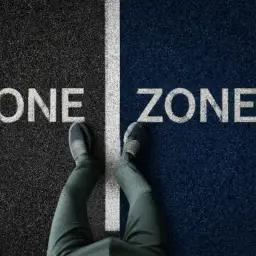Are you tired of feeling stuck in your personal and professional growth? Do you want to learn how to overcome limiting beliefs and cultivate a positive mindset? Developing a growth mindset can help you achieve your goals and reach your full potential.
In this practical guide, we will explore strategies that work to help you develop a growth mindset.
First, let’s understand the difference between a fixed mindset and a growth mindset. A fixed mindset is the belief that our intelligence, abilities, and talents are fixed traits that cannot be changed. On the other hand, a growth mindset is the belief that we can develop and improve our intelligence, abilities, and talents through hard work, perseverance, and learning from our mistakes.
By adopting a growth mindset, we can overcome limiting beliefs and embrace challenges and failures as opportunities for growth and development. So, are you ready to start your journey towards a growth mindset? Let’s dive in!
Key Takeaways
- Identifying and challenging limiting beliefs is crucial for developing a growth mindset.
- Embracing challenges and failure is necessary for learning and growth.
- Mindfulness practices and gratitude exercises can help shift focus from negative to positive thoughts.
- Building resilience requires developing coping strategies and mental toughness to overcome adversity.
Understanding the Difference Between Fixed and Growth Mindsets
It’s important to grasp the contrast between fixed and growth mindsets to truly understand how to develop a growth mindset. Fixed mindsets are characterized by a belief that abilities and intelligence are fixed traits, while growth mindsets see them as malleable and capable of improvement through effort and learning.
Individuals with a fixed mindset tend to avoid challenges, seeing them as a threat to their self-image. On the other hand, those with a growth mindset embrace challenges as opportunities for growth.
Examples of fixed and growth mindset thinking can be seen in how individuals react to failure. Those with a fixed mindset tend to interpret failure as evidence of their own limitations. In contrast, those with a growth mindset see it as a temporary setback and an opportunity to learn and improve.
By understanding the key characteristics of fixed and growth mindsets, we can begin to shift our own thinking towards a growth mindset and develop strategies to overcome the limitations of fixed thinking.
Overcoming Limiting Beliefs
You may have some limiting beliefs that are holding you back from reaching your full potential.
Identifying these beliefs is the first step in overcoming them. Once you’ve identified them, it’s time to challenge and replace them with more empowering beliefs.
Identifying Your Limiting Beliefs
Uncovering the beliefs that hold you back can be like shining a light in a dark and cluttered room. It can be uncomfortable and even scary to confront the negative thoughts and beliefs that are holding you back, but it’s an essential step in developing a growth mindset.
Overcoming negative self-talk and identifying patterns of self-sabotage are key to identifying your limiting beliefs. To start, pay attention to the stories you tell yourself. What do you often say about yourself and your abilities? Are these stories empowering or limiting?
Take note of any negative self-talk and challenge those beliefs. Ask yourself if they’re really true or if you have evidence to the contrary. Identifying these beliefs is the first step in creating a plan to move past them and develop a growth mindset.
Remember, your thoughts and beliefs shape your reality, so it’s important to make sure they’re empowering and supportive of your goals.
Challenging and Replacing Limiting Beliefs
Challenging and replacing limiting beliefs requires a willingness to confront and change deeply ingrained thought patterns that may be holding you back from achieving your goals. It involves making mindset shifts and cognitive restructuring to create new, empowering beliefs that support your growth and progress.
This process can be both challenging and rewarding, as you begin to see yourself and your potential in a new light. To make the most of this process, it’s important to approach it with an open mind and a willingness to experiment with new perspectives and approaches.
Here are a few strategies that can help you challenge and replace limiting beliefs:
- Start by identifying the thoughts or beliefs that are holding you back.
- Consider the evidence that supports or contradicts these beliefs.
- Challenge the validity of your limiting beliefs by questioning their accuracy and considering alternative viewpoints.
- Replace your limiting beliefs with more empowering ones that better support your growth and progress.
By taking these steps, you can begin to shift your mindset and create new, empowering beliefs that enable you to reach your full potential. With practice and persistence, you can develop a growth mindset that allows you to overcome obstacles and achieve your goals.
Embracing Challenges and Failure
Facing obstacles and setbacks head-on is essential for developing a growth mindset, as it allows you to learn and grow from your failures. Embracing challenges and failure is not an easy task, but it is a necessary one. By embracing discomfort and pushing yourself beyond your comfort zone, you open yourself up to new possibilities and opportunities for growth.
One way to embrace challenges and failure is to view them as opportunities for growth and learning. This mindset shift can help you see setbacks as stepping stones towards success rather than roadblocks. Additionally, reflecting on your failures and analyzing what went wrong can help you identify areas for improvement and develop new strategies for success. It’s important to remember that embracing challenges and failure is not a one-time event, but rather a continuous process of pushing yourself and learning from your experiences.
| Ideas | Examples | Strategies | ||||
|---|---|---|---|---|---|---|
| Embrace discomfort | Trying new things | Pushing yourself out of your comfort zone | ||||
| View failure as an opportunity | Learning from mistakes | Reflecting on setbacks and identifying areas for improvement | ||||
| Persistence | Persevering through challenges | Developing a "never give up"attitude | ||||
| Seek feedback | Asking for constructive criticism | Using feedback to improve and grow | Embrace challenges | Taking on difficult tasks as opportunities for growth | Seeing challenges as a chance to learn and develop new skills |
Cultivating a Positive Mindset
You can cultivate a positive mindset by focusing on the good things in your life and practicing gratitude.
Mindfulness practices and gratitude exercises can help you shift your focus from negative to positive thoughts. Mindfulness involves being present and fully engaged in the current moment, which can help you appreciate the good things in your life.
Gratitude exercises can include writing down things you’re grateful for or expressing gratitude to others. By making these practices a part of your daily routine, you can train your brain to focus on the positive and develop a more optimistic outlook on life.
Cultivating a positive mindset is not always easy, especially when faced with challenges or obstacles. However, by practicing mindfulness and gratitude, you can build resilience and develop a more positive attitude towards life.
Remember to take time to appreciate the good things in your life, no matter how small they may seem. With regular practice, you can rewire your brain to focus on the positive and develop a growth mindset that’ll help you overcome any obstacle.
Developing Resilience
To become more resilient, it’s important to focus on building up your ability to bounce back from difficult situations. Developing resilience requires building grit and learning coping strategies that will help you face challenges with a positive attitude.
Grit is the ability to persevere through adversity, to keep going even when things get tough. Building grit means developing a mindset that sees challenges as opportunities to grow and learn.
Coping strategies are also important when it comes to building resilience. These are techniques that you can use to manage stress, anxiety, and other negative emotions. Coping strategies can include deep breathing exercises, journaling, or practicing mindfulness.
By using these techniques, you can learn to regulate your emotions and stay calm in difficult situations. Ultimately, building resilience is about developing the mental toughness to overcome adversity and bounce back stronger than ever before.
Implementing a Growth Mindset in Your Daily Life
By embracing a growth mindset, you’ll discover new possibilities and enjoy the journey towards achieving your goals. To implement this mindset into your daily life, it’s important to build habits that reinforce growth. This could include setting aside time each day to learn something new, seeking out challenges, and taking risks. In doing so, you’ll develop a sense of curiosity and a willingness to try new things, both of which are crucial to a growth mindset.
Another key aspect of developing a growth mindset is seeking feedback. This means actively seeking out constructive criticism and using it to improve. It can be difficult to hear criticism, but it’s important to remember that it’s not a reflection of your worth as a person. Rather, it’s an opportunity to learn and grow.
By embracing feedback, you’ll be able to identify areas for improvement and work towards becoming the best version of yourself.
Frequently Asked Questions
What are the potential drawbacks of having a growth mindset?
When it comes to having a growth mindset, there are both benefits and limitations.
On the one hand, having a growth mindset can help you to overcome challenges, learn new things, and ultimately achieve more success.
However, it’s important to also balance your growth mindset with a healthy dose of realism and self-awareness. Otherwise, you may end up taking on too much, setting unrealistic goals, or failing to recognize your own limitations.
So while developing a growth mindset can be incredibly beneficial, it’s also important to be mindful of the potential drawbacks and work to find a healthy balance.
How do external factors, such as societal expectations, impact the development of a growth mindset?
Societal pressures and parental influence can have a significant impact on the development of a growth mindset.
From a young age, children are often exposed to societal expectations and pressures to conform to certain standards of success. This can create a fixed mindset where they believe that their abilities are predetermined and cannot be changed.
Parental influence can also play a role, as parents may unintentionally reinforce fixed mindset beliefs by praising their child’s intelligence or talent rather than their effort and hard work.
However, it’s important to recognize that these external factors don’t determine one’s mindset, and with conscious effort and practice, individuals can develop a growth mindset and overcome these obstacles.
Can a growth mindset be developed in adulthood, or is it primarily formed during childhood?
Developing a growth mindset in adulthood can be challenging, but it’s never too late to change your mindset and approach challenges with a growth mindset.
Some aspects of a growth mindset may be formed during childhood, but it’s possible to develop it at any age.
One of the challenges faced when developing a growth mindset in adulthood is the deeply ingrained beliefs and attitudes formed over a lifetime. It can be difficult to let go of these beliefs and embrace the idea that with effort and perseverance, you can improve your abilities and skills.
Additionally, it can be challenging to face failure and setbacks with a growth mindset, especially if you’ve spent years believing that failure is a sign of weakness or incompetence.
However, with practice and the right strategies, it is possible to develop a growth mindset at any age and experience the many benefits that come with it.
Are there any cultural or demographic factors that may influence the effectiveness of growth mindset strategies?
Cultural influences and demographic differences can play a significant role in the effectiveness of growth mindset strategies.
For example, some cultures may prioritize individual success over community success, which can affect how individuals perceive failure and their willingness to take risks.
Additionally, demographic factors such as age, gender, and socioeconomic status can impact access to resources and opportunities for growth.
It’s important to consider these factors when developing and implementing growth mindset strategies to ensure they are effective for all individuals, regardless of their cultural or demographic background.
How can individuals with mental health challenges, such as depression or anxiety, benefit from developing a growth mindset?
If you struggle with mental health challenges like depression or anxiety, developing a growth mindset can be incredibly beneficial. By focusing on the idea that skills and abilities can be developed through effort and dedication, rather than being fixed traits, you can cultivate a sense of resilience and perseverance that can help you overcome obstacles.
This can be especially helpful in the context of therapy, where a growth mindset can help you stay motivated and engaged in the process of healing and personal growth. Additionally, a growth mindset can improve your workplace performance by allowing you to approach challenges with a sense of curiosity and a willingness to learn, rather than feeling defeated or overwhelmed.
By embracing a growth mindset, you can unlock your full potential and achieve greater success and fulfillment in all areas of your life.
Conclusion
Now that you’ve learned about the difference between fixed and growth mindsets, how to overcome limiting beliefs, embrace challenges and failure, cultivate a positive mindset, and develop resilience, it’s time to implement a growth mindset in your daily life.
Remember, changing your mindset takes time and effort, but the benefits are worth it. Start small by setting achievable goals and celebrating your progress.
When faced with challenges, remind yourself that they are opportunities for growth and learning. And most importantly, be kind and patient with yourself as you continue to develop a growth mindset.
With practice and perseverance, you can achieve your goals and become the best version of yourself.




















































































































